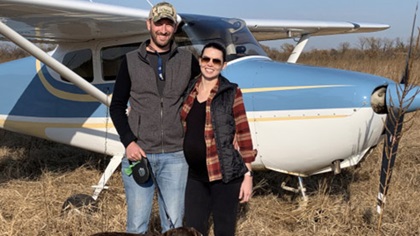ASI News: Pump up the preflight
Aircraft age is more than a number

While we assess the overall status of the airplane we hope to fly, we might unwittingly overlook signs of premature aircraft aging. Most of these signs won’t make an aircraft unairworthy, but aging is an important factor to learn about and keep in mind. As you transition from student to pilot in command, and toward the eventual freedom of renting (or buying) an airplane outside the flight training environment, the responsibility of noticing signs of aging will fall on your shoulders.
Serious corrosion and neglect will be simple enough to spot, but other signs of age can hide unless you know what to look for. Let’s start with some cues that can tell you about an aircraft’s “true” age. What would you rather buy: a Cessna 150 with a history of 10,000 hours and an IFR panel, or a single-owner 150 with an ancient radio? A strictly freshwater floatplane or an ocean-flying seaplane? A taildragger with the original (if slightly nicked) fabric, or one with a brand-new paint job? Every option could be the right one for you, if you know what you’re getting into.
A history of many hours could mean that the 150 has been used for flight training—and subject to a variety of landings. Saltwater puts wear and tear on a floatplane more quickly than freshwater-only flying. And sometimes, fresh paint on a taildragger means it might have a history of damage, like a recent ground loop. Each of these aircraft could have been manufactured the same year, but with their varied histories, each has aged differently.
While you can’t change an aircraft’s prior use, you can follow a few tips to help the aircraft you fly live a long and a healthy life, slow the effects of aging, and make it more reliable and safe going forward.
Clean out any dirt and grime on the inside and outside of the aircraft. Be sure to protect the aircraft’s windshield as well and avoid cleaning in a circular motion. If you rent, the flight school might already do this for you.
Regularly inspect the aircraft for any symptoms of aging, such as skin deformities, defects, or damage.
Flying to another airport? Remember to pack oil, tiedowns, chocks, and an aircraft cover to help protect the aircraft.
Detecting a problem early can help save money on repair costs—which may in turn help keep rental or ownership costs lower. Monitor oil consumption, make sure the tires are properly inflated, and monitor the engine gauges and listen for unusual sounds.
With knowledge and care, you’ll be able to slow the effects of aging, and help keep the airplane you fly healthy and reliable for years to come.

 In this episode, the AOPA Air Safety Institute talks to GA pilot Kelly Keller, who was flying back home from a fishing resort in Arkansas with her husband while seven months pregnant when she experienced an engine failure in a Cessna 172.
In this episode, the AOPA Air Safety Institute talks to GA pilot Kelly Keller, who was flying back home from a fishing resort in Arkansas with her husband while seven months pregnant when she experienced an engine failure in a Cessna 172.

